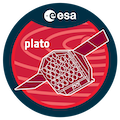Speaker
Description
The first long pointing field of PLATO has been recently selected (LOPS2). Accurate characterization of this region of the sky is of great relevance for the preparation and future success of PLATO. It is possible to derive space-based photometry of stars in LOPS2 before the launch of PLATO given that the TESS satellite has repeadetly observed it during the past years. The DIAmante pipeline is based on the difference imaging approach and has already provided accurate photometry of PLATO targets in the past. When coupled with traditional and innovative transit search techniques it has permitted the identification of hundreds of new transiting candidates (Montalto et al. 2020, 2023; Melton et al. 2023a,b,c). Here I present the preparation of a novel set of DIAmante photometric measurements focused on LOPS2. The stars in the field have been selected form Gaia DR3 and include both PLATO targets and contaminant sources down to a preselected PLATO magnitude limit. This set is broader than the one in the target PLATO Input Catalog (PIC; Montalto et al. 2021) both in terms of magnitude limit and in terms of spectral type coverage. The analysis of these light curves with different algorithms will be crucial for the characterization of PLATO targets and their contaminants, for the identification additional targets of scientific interest for PLATO and for the future interpretation of PLATO results.

